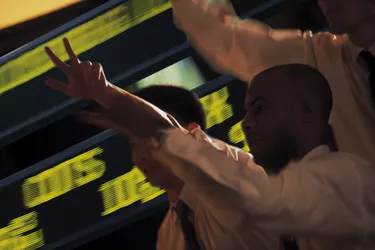
When you decide to buy, sell or trade a security, the assumption is that the command to buy, sell or trade is immediately implemented; however, the command goes through a series of steps known as the trade life cycle. If new to trading, you may be wondering what is the trade life cycle? And how do companies monitor it in their practice?
What Is the Trade Life Cycle?
Video of the Day
The trade life cycle refers to the process securities go through from the moment an order to buy, sell or trade is inputted to completion, according to the Financial Industry Regulatory Authority (FINRA), a not-for-profit organization that provides tools for investors, member firms and policymakers under the supervision of the U.S. Securities and Exchange Commission (SEC).
Video of the Day
The process begins when a customer, using an internet-based platform, orders to buy, sell or trade a security. The order is then received by the brokerage firm, which will determine the optimal way to execute the order. They will review whether the order is compliant with the brokerage firm's policies as well as legal, regulatory and compliance obligations.
Once the order is reviewed and approved, the broker sends the order to a wholesale broker, which deals with buying and selling securities within their own inventory, as opposed to matching a trade to an interested party. Or, the broker may send it to an exchange, which is the traditional marketplace for trading securities, according to FINRA. Brokers may even send the order to an alternative trading system, a non-exchange trading platform. Once the wholesale broker, exchange or alternative trading receives the order, they execute it, leading to the final step: an electronic confirmation sent to the customer.
The Front Office in the Trade Life Cycle and Back Office
According to information from the SEC, a three-office organizational structure should be put in place to ensure companies maintain independence in functional trading and marketing activities, as well as a checks and balances system throughout the trade life cycle. The offices included in this three-office system are the front office, the middle office and the back office.
According to the SEC, the front office in the trade life cycle includes the trading group and any party that commits the company to a transaction. They're responsible for buying, selling and hedging securities and capturing and logging transactions' terms and conditions, scheduling and nominations.
They are supported by the back office through accounting, invoicing, dispute resolution, accounts receivable and so on. According to the SEC, they perform financial accounting, keep records of realized and unrealized gains and losses, as well as reconcile the general ledger, cash positions and margin accounts and other relevant duties. The back office is also responsible for invoicing counterparties, resolving billing disputes and performing daily, weekly and monthly checkouts with various counterparties.
Middle Office Functions in Trade Life Cycles
The middle office functions in trade life cycles focus on compliance with the company's risk policy as well as maintaining overall control over the environment. They should be independent of the front office and report to the CRO or CFO of the company since policing the front office's activities makes up a large portion of the middle office's responsibilities.
According to the SEC, the middle office responsibilities include risk control, such as confirming transactions comply with industry standards, risk analysis, such as daily risk exposure reports and valuation, such as performing periodic back and stress-testing.
Consider also: "Trade Settlement" Definition